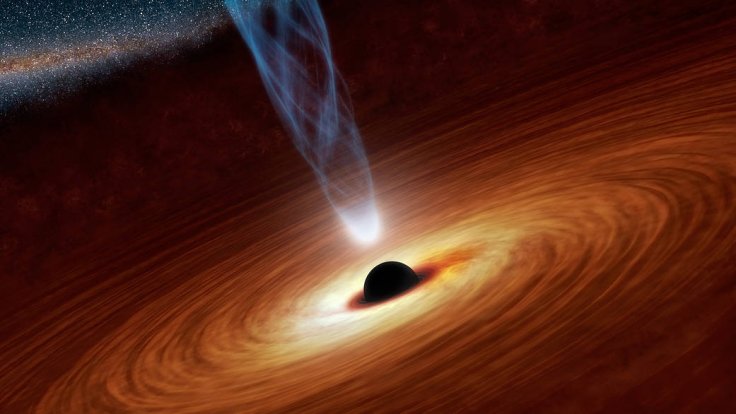A team of researchers came across an ancient supermassive black hole that's targeting Earth with its particle beam. According to their study, the newly discovered black hole could be the farthest and oldest of its kind.
The researchers identified the supermassive black hole as PSO J030947.49+271757.31. Based on its characteristics, they labelled it as a blazar, which is a supermassive black hole at the centre of an active galactic system that's producing powerful electromagnetic emissions. The study conducted by the researchers on the newly discovered blazar was published in the journal Astronomy and Astrophysics.
A Supermassive Black Hole Aiming At Earth

In addition to their locations, the researchers noted that blazar often used for supermassive black holes that are targeting Earth with their jets of radiation. Although this may seem like a threat to Earth, the planet is generally not in danger from blazars since many of them are millions to billions of light-years away.
Since PSO J030947.49+271757.31 is directly aimed at Earth with its radiation jet, the researchers were able to observe it using the Large Binocular Telescope (LBT). Through the LBT, the researchers were able to collect valuable information regarding its composition and structural characteristics.
"The spectrum that appeared before our eyes confirmed first that PSO J0309+27 is actually an active galaxy nucleus or a galaxy whose central nucleus is extremely bright due to the presence in its centre of a supermassive black hole fed by the gas and the stars it engulfs," astrophysicist Silvia Belladitta of Italy's University of Insubria said in a statement.
Finding The Oldest And Farthest Blazar

Aside from its composition, studying the supermassive black hole also enabled the researchers to learn more about its age. According to the data collected by the LBT, the detectable light coming from PSO J030947.49+271757.31 was emitted by the black hole almost 13 billion years ago.
This means that the supermassive black hole was already active during the early years of the universe or around a billion years following the Big Bang. Also, since it took 13 billion years for the light to be detected from Earth, the researchers noted that PSO J030947.49+271757.31 could be the oldest and most distant blazar ever discovered.
"Thanks to our discovery, we are able to say that in the first billion years of life of the Universe, there existed a large number of very massive black holes emitting powerful relativistic jets," Belladitta stated. This result places tight constraints on the theoretical models that try to explain the origin of these huge black holes in our Universe."









